A tiny speck of land in the middle of Halifax Harbour. A place where not so long ago you needed to be invited to go and see. Since the summer of 2020, this is now partially open to the public and managed by Parks Canada. The off-limits parts are still under renovation and partially under reconstruction to make it safe for all.
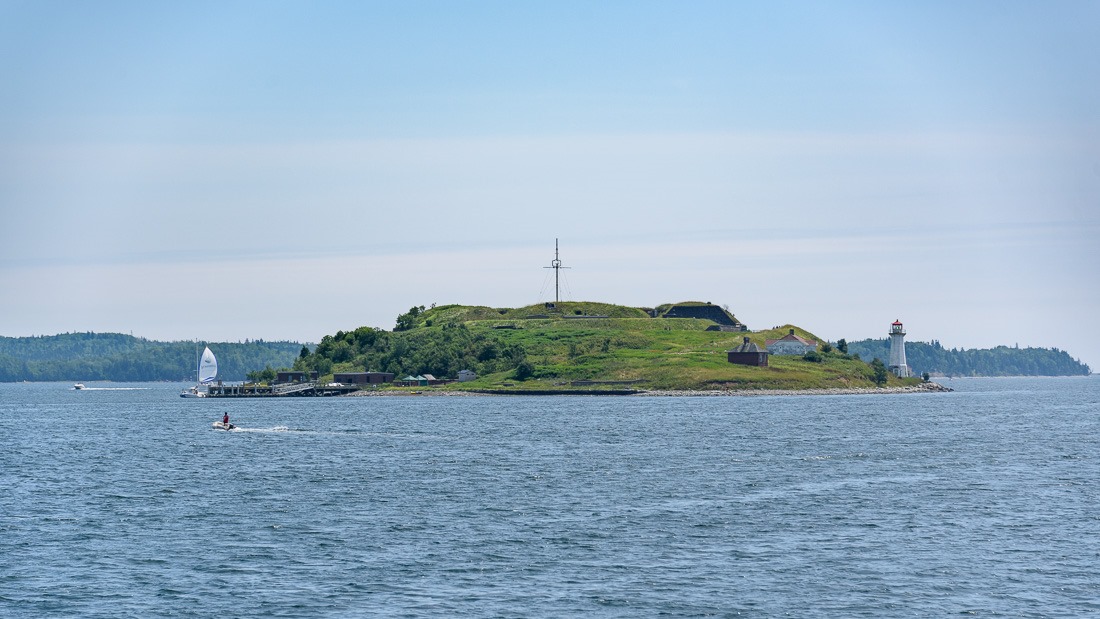
Some parts are excluded as steep banks into purposely murdering ditches are to remain as they are. This is the island no vessel should pass if not expressly authorised. It is part of the Halifax Defense Complex.
Just like all other defense systems around Halifax, this one has never shot a cannon ball in anger at anyone. Georges Island (named after George II) houses Fort Charlotte, named after King George’s wife Charlotte. Fort Charlotte was established in 1750, while the island has been used for many questionable purposes in the past. From prison camp to housing forcefully expatriated Acadians and more.
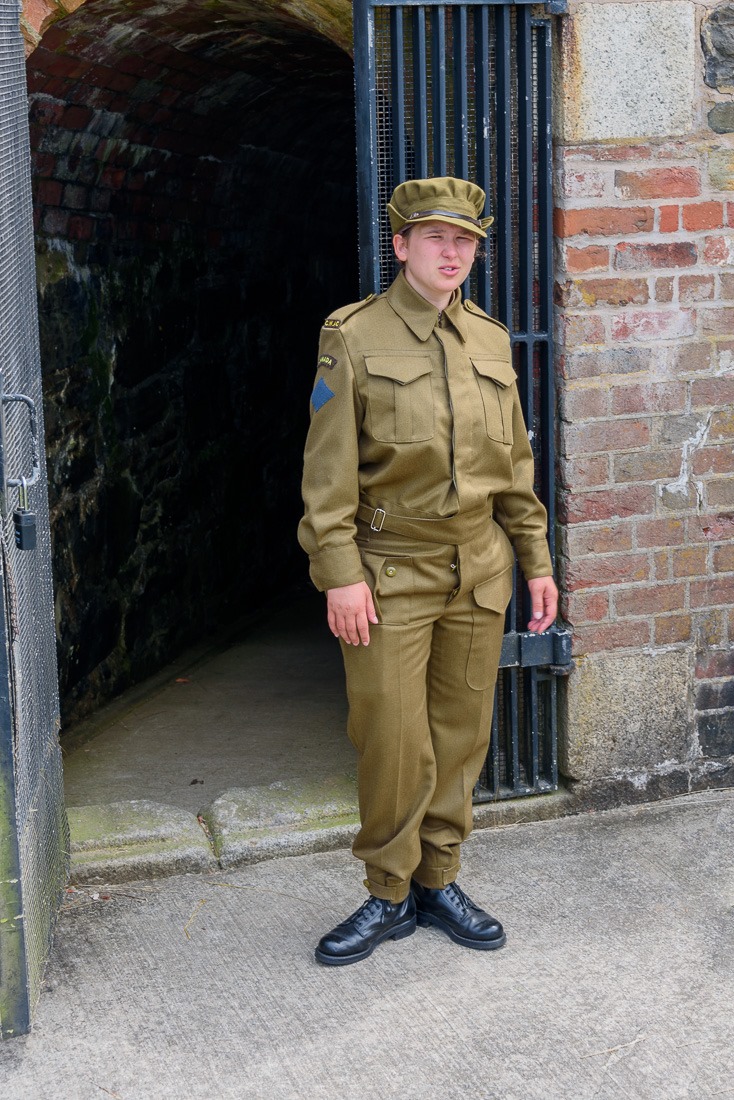
Our guide
Today’s tour into the tunnels and underground rooms was provided by a young soldier in WWII outfit. Probably not the best day to wear it as it was hot and muggy. At least the tunnels were cool. After getting our eyes adjusted to the dim lighting underground, we arrived in the powder room. Well, I should say the powder storage facility. A room where black powder was stored safely.
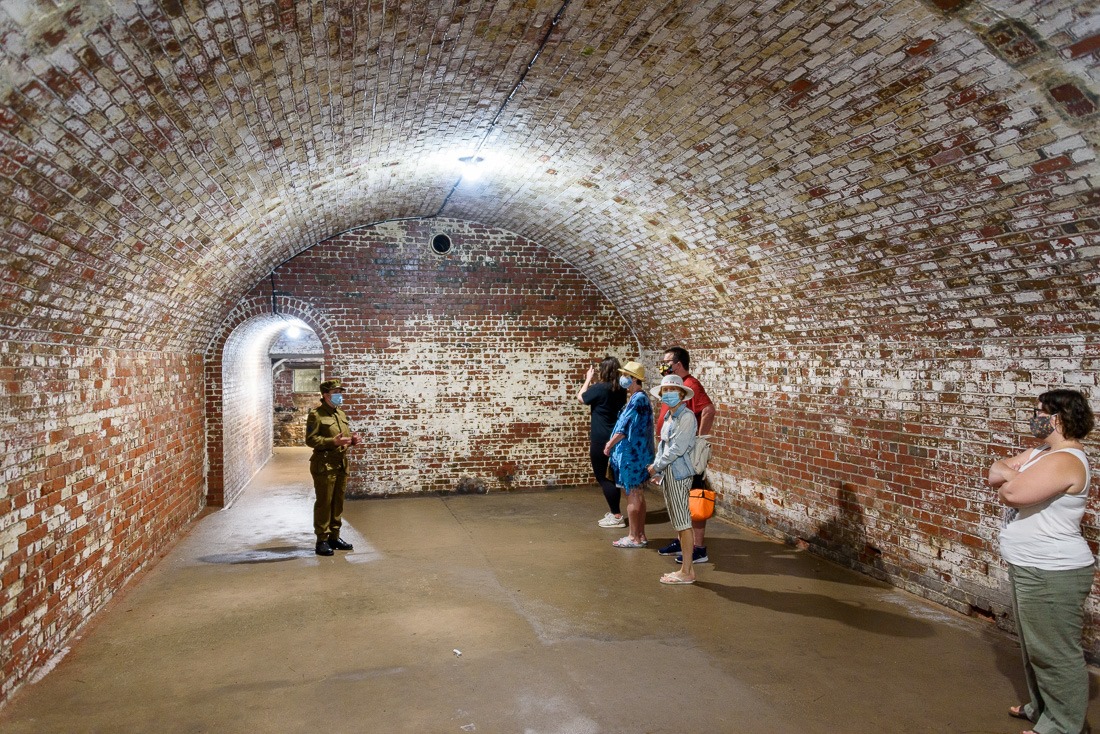
Powder room with air intake
The room is provided with a constant air flow to avoid the hardening of the black powder. Once it’s hard, it is no longer usable and that is not an option for defensive facility like this. You can see the air conduit in the back wall. However, that would not provide enough air flow into the room without the other side having a way bigger conduit.
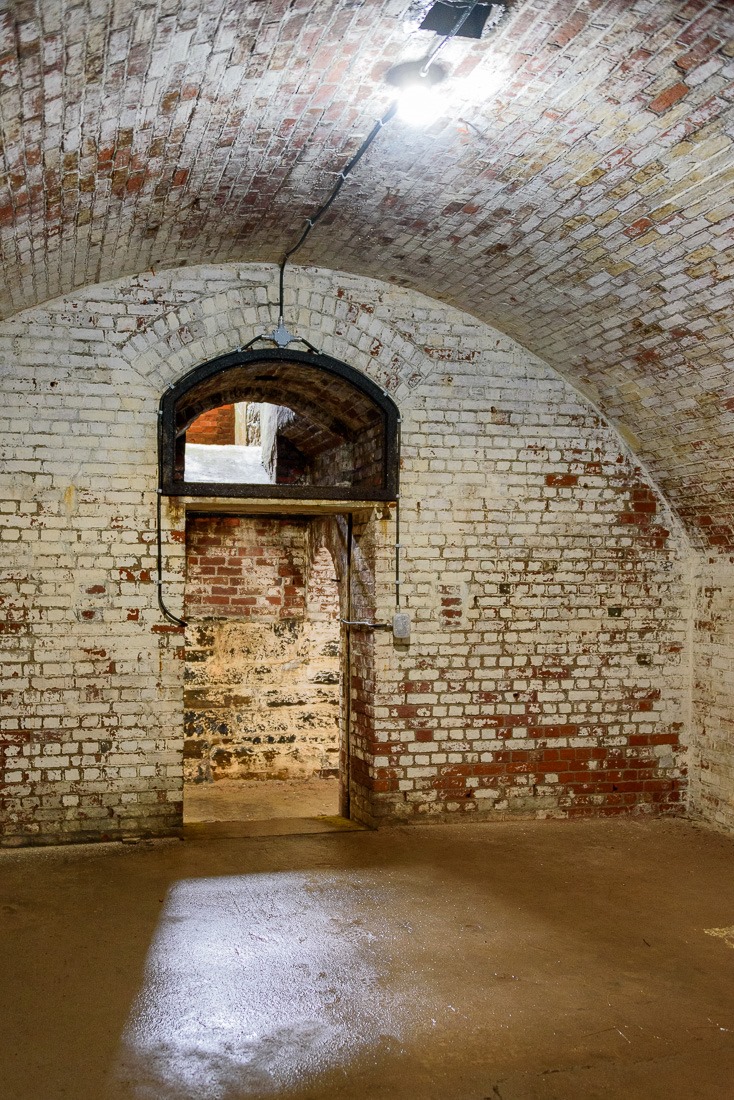
Air outflow
Blowing air from one side to the other allowed for the black powder to remain in working condition. Having black powder in one place in a fort is one thing, but you have to get it out to the cannons and guns if it is to be useful. Here on Georges Island, the transport of the powder is underground. It looks obvious, right?

Tunnels galore
So there are plenty of tunnels under the island to transport the powder from one place to the other, unseen by any enemy of any kind. Today, the lighting is pretty nice in there, but in the 1750s, it was a near pitch black, save from the few candles that were burning in special niches that would aerate the heat and smoke from them outside as quickly as possible. So not only it would have been dark, it would have been cold as well. And no way any soldier would be walking in there with a lantern of any kind.
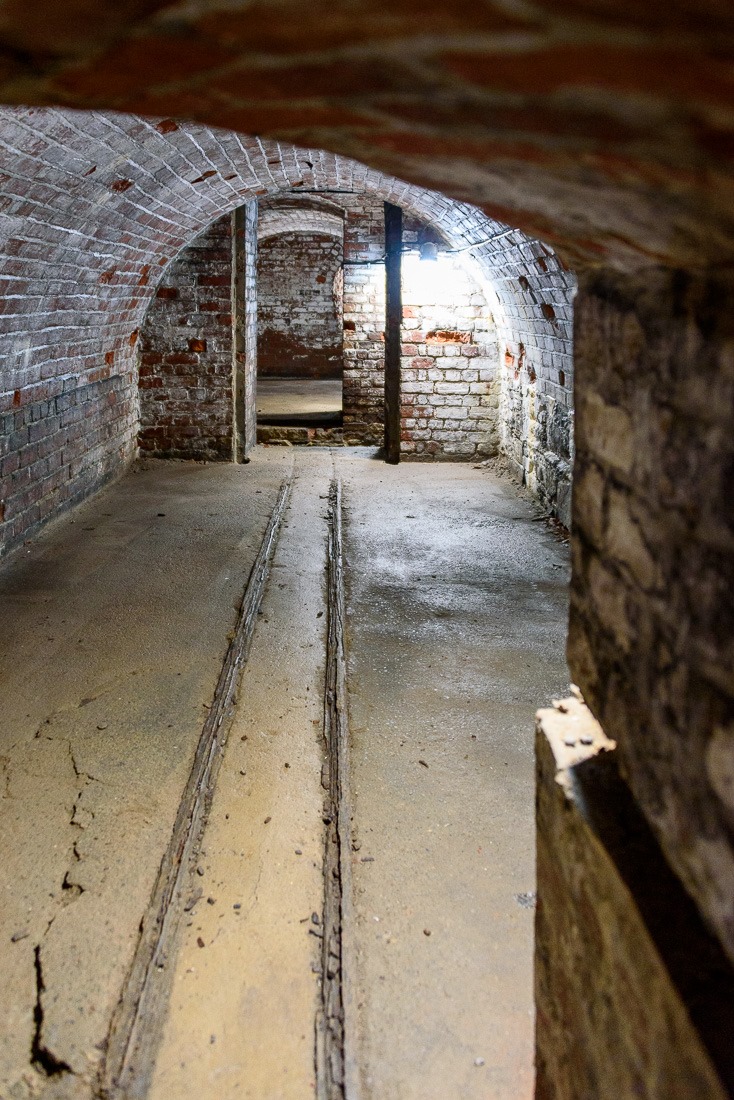
Tracks into the powder complex
There are barely rescued tracks for powder delivery from the outside. The tracks have nearly all rusted away. No surprise about that, knowing that the air is humid with sea-air and thus salty and rust inducing. These tracks have been rescued only partially, much of the rest was too far gone after WWII.
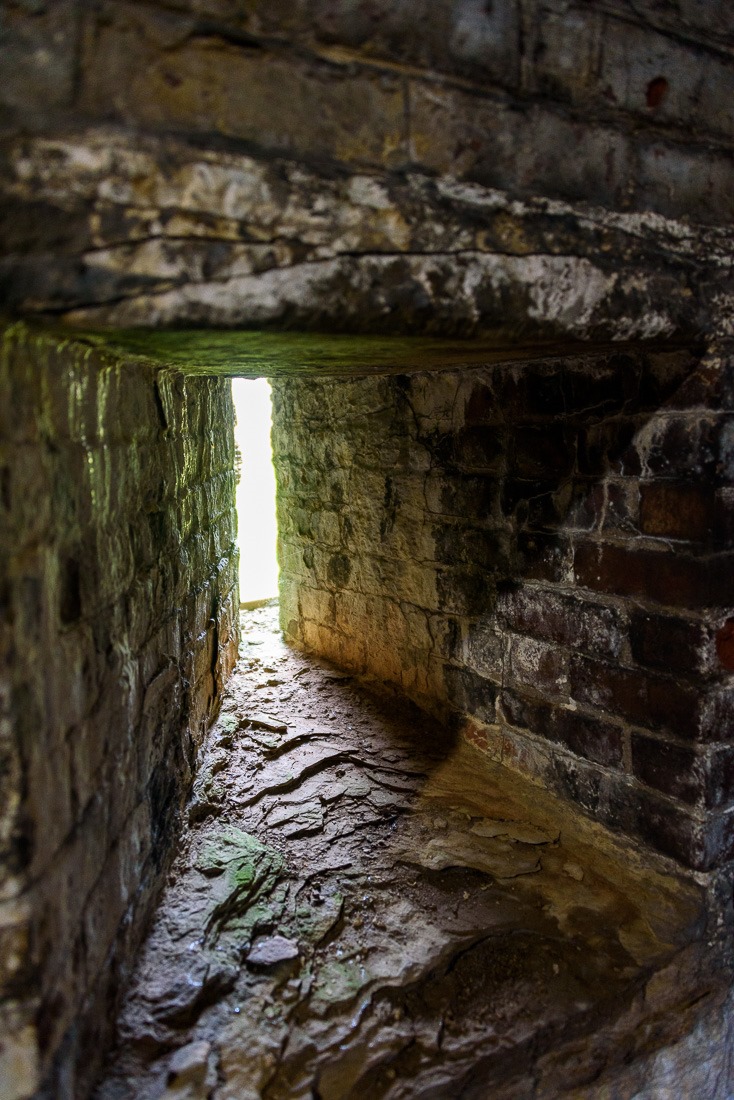
Arrow slits for a nasty surprise
Of course, the facility would have to be defended against enemy soldiers already on the island. These arrow slits would have taken care of any enemy approaching on foot. In French, those arrow slits are called “Meurtrières” or “murderers” as the unsuspecting enemy would have no idea where the shots came from until it was too late. The small slits would also have been terribly difficult to shoot a bullet through from the outside.
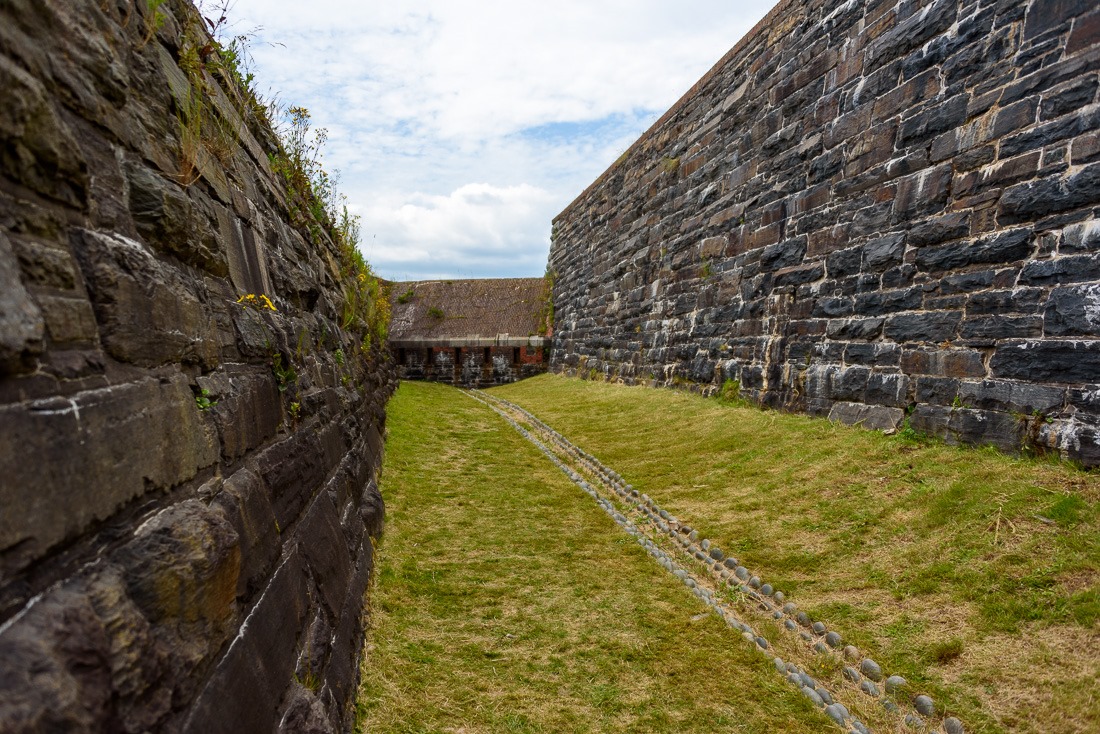
Dry ditch, designed to break your bones
I guess that any enemy should be suspecting of this kind of defense, but it would still be a nasty surprise. On the other side of the fort, special ditches were kept dry and paved at the bottom. Anyone falling into those ditches was sure to break a limb or two, making you unfit for more fighting. Today this looks peaceful and nice, but I can only imagine the view from someone who has just broken an ankle or so.
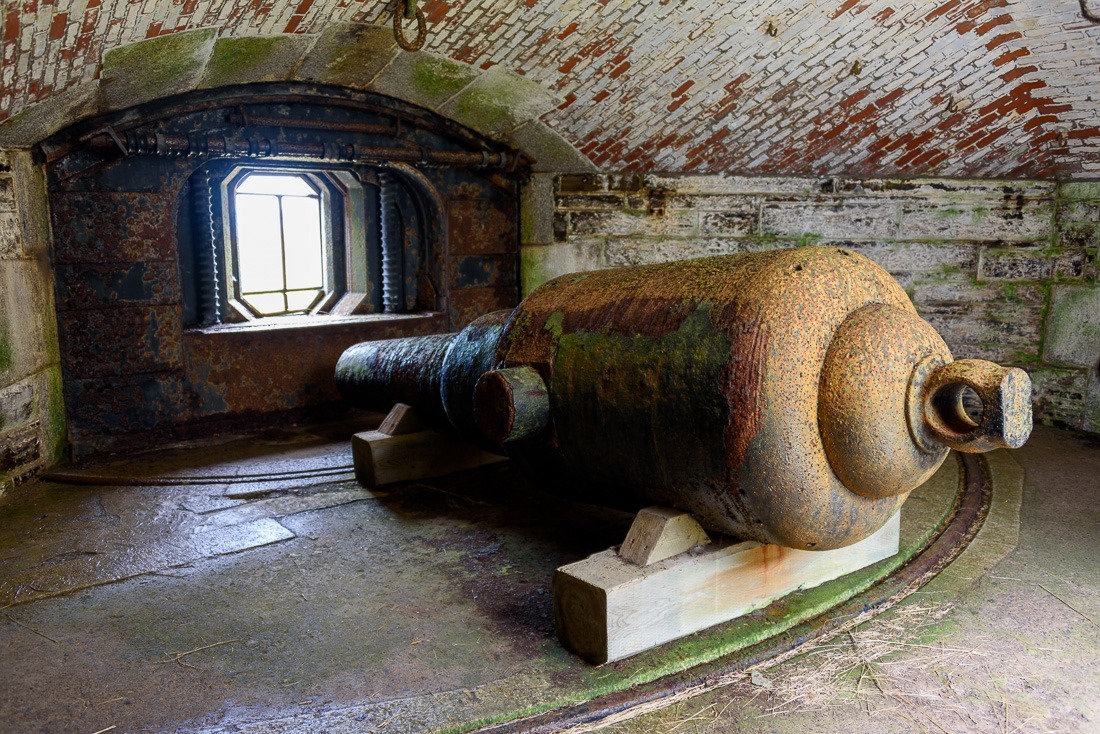
10 inch underground Rifle-Muzzle-Loading cannon
At the end of the dry ditch is another entrance to the tunnels. This time not made for black powder transport, but for the use of it. The salty sea air has taken its toll here too but has in no way diminished the menacing character of these guys. Now sitting only on blocks, in service, they would have been able to rotate over tracks and were able to shoot in a fairly wide angle. The small window was only opened for a shot, then closed again so the soldiers could safely reload the piece. Once ready to be fired using a fuse, all soldiers needed to run outside, close the heavy door and wait for the gun to go off. Anyone remaining inside would have lost his hearing in one shot.
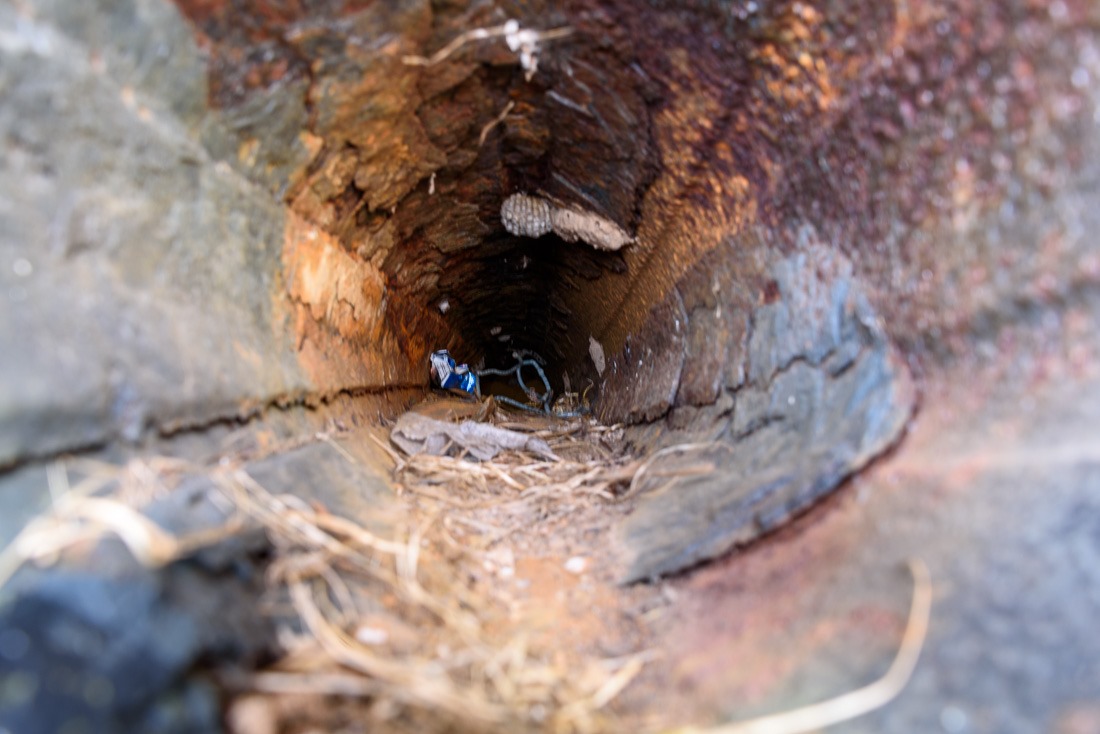
A look into a 9 inch cannon
The look inside one of the cannons seems interesting. Although severely rusted and filled with debris, the rifling is still clearly visible. These cannons were pretty accurate, to say the least. A projectile coming out of this cannon would be spinning on its axis and thus retain its forward direction a lot better.
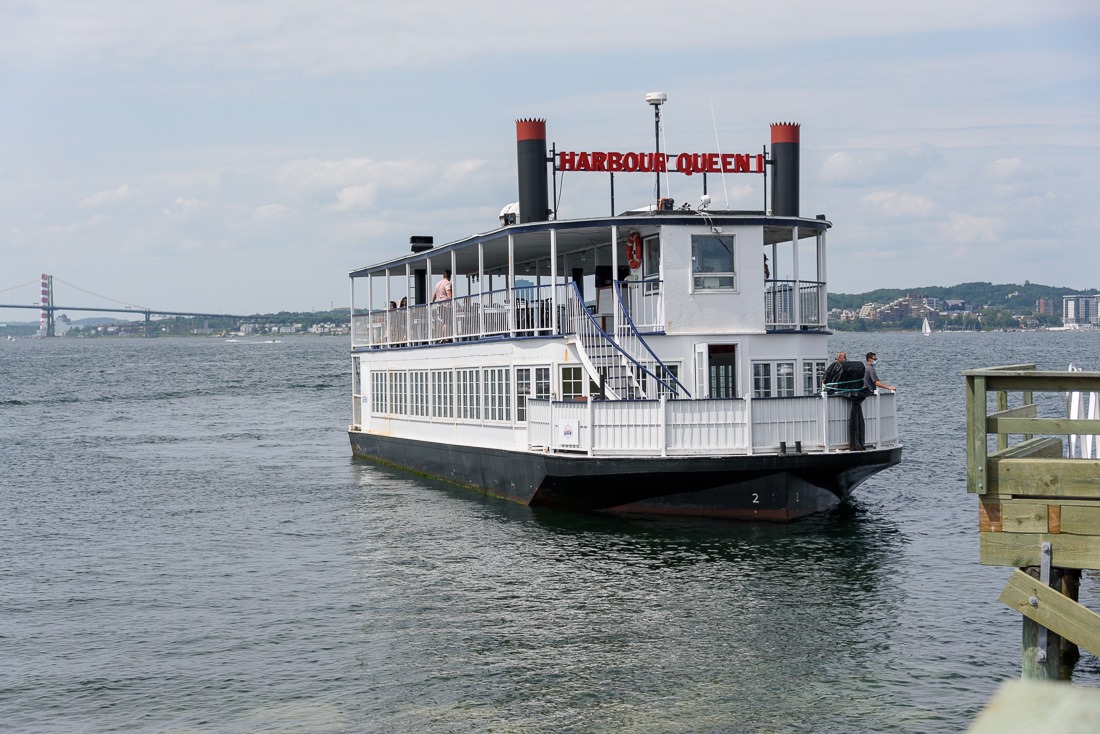
Harbour Queen Paddlewheel ferry
After this last picture of the business end of the cannon, it was time to leave the island and return to the mainland. A paddlewheel boat was there to make the 10 minute trip back to Halifax. The paddle wheel, as well as the smoke stacks are as real as they come…
Until next time…
